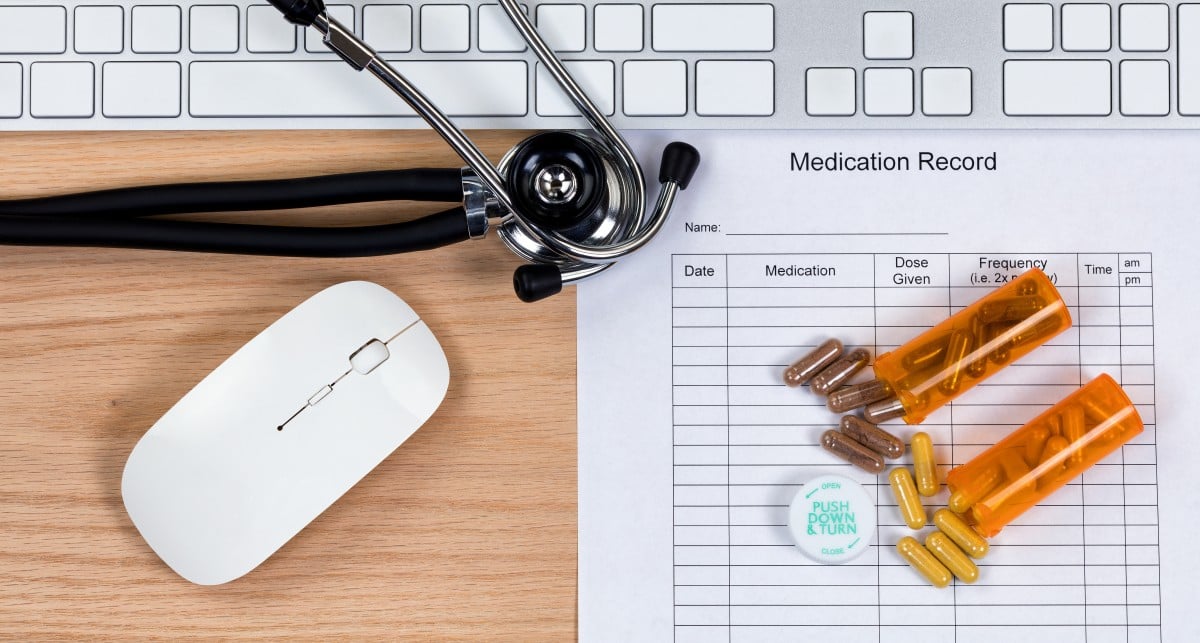Using Patient Education Videos to Support Preventive Care Strategies
As a healthcare provider, you know prevention saves lives. From routine screenings and lifestyle counseling to vaccinations and early detection,...
 Most of us can take a quick look at our home and find a slew of products, from household goods and appliances to our wardrobes, that no longer suit us. We hold on to them because they’ve always been there and we’ve grown used to them and how they (mostly) fit. If you’ve ever driven an old car, you know the feeling as well. You learn to overlook the shortcomings because you’ve gotten used to them, and because transitioning to something new can be a hassle that comes with disruption and expense.
Most of us can take a quick look at our home and find a slew of products, from household goods and appliances to our wardrobes, that no longer suit us. We hold on to them because they’ve always been there and we’ve grown used to them and how they (mostly) fit. If you’ve ever driven an old car, you know the feeling as well. You learn to overlook the shortcomings because you’ve gotten used to them, and because transitioning to something new can be a hassle that comes with disruption and expense.
While delaying transitions to new things might be workable in your everyday life, can the same be said for tools used for your business? When it comes to your medical office or dental practice, are you relying on software that you’ve outgrown or that hasn’t kept pace with available technology? Further, are you jeopardizing patient security and care outcomes?
Electronic prescribing software began to revolutionize the healthcare industry some time ago. Early adopters understand just how significant the change from written, phone and faxed prescriptions to ePrescribing has been. Like an older car, our needs outgrow their utility. Newer models enter the market and offer better efficiency, more safety, and features that improve the experience. ePrescribing software is no different.
Quick Links
In both medical offices and dental practices, prescribing medications is a pretty regular occurrence. But in dental practices, where prescriptions are written less frequently, it can be more challenging.
First and foremost, doctors and dentists need to know that the prescription they’re writing is the most effective way to treat the concern with medication. Often that requires consulting with a Physicians' Desk Reference (PDR) or the Lexicomp® drug directory. But that’s not the only concern.
Prescribers also need to prevent medication errors. That requires being highly aware of potential interactions, contraindications, and allergies/adverse reactions, which means knowing a patient’s full medication history. Attaining that medication history can be especially difficult when patients either don’t remember or choose to omit medications or prescriptions. Even though your staff diligently tries to keep patient records accurate, the list you have on record may be “mostly” correct at best.
In addition to issues related to prescribing the most appropriate medication, there are potential barriers to patients getting that prescription filled. When the prescription is an essential part of the care plan, non-adherence can be a significant challenge.
With prescription drug abuse reaching epidemic proportions and nearly a quarter of Americans misusing prescriptions, being mindful of safety and accuracy is a matter of life and death. That’s why so many states now have Prescription Drug Monitoring Programs (PMP/PDMP) for accurately tracking prescription history. Many states also mandate ePrescribing for all or some medications, like Electronic Prescribing for Controlled Substances (EPCS). It also means there can be legal ramifications for your practice when it comes to incorrectly prescribing.
 How ePrescribing Can Help Conquer Prescription Challenges
How ePrescribing Can Help Conquer Prescription ChallengesBecause of legal mandates, many medical and dental practices are already ePrescribing. That means that many doctors are already learning how to best utilize ePrescription software to help meet all of those prescribing challenges.
ePrescribing software is already helping to combat the challenges above in significant ways, and research highlights several challenges that ePrescribing can help conquer including:
It’s easy to see why, with these benefits, 62% of prescribers are using electronic prescribing for controlled substances. But exactly what features are ePrescribing solutions providing?
We’re over two decades into the availability of ePrescribing software and, across the board, most seem to offer some pretty standard features that are helping practices reap the benefits.
Common features of ePrescribing software include:
These features have been standardized across most ePrescribing solutions, but, after 20 years, it’s not unreasonable to expect more. There is additional capability out there, so when it comes time to select or review your ePrescribing solution, it’s probably also a good time to see what’s possible.
 How to Choose the Right ePrescribing Software for Your Practice
How to Choose the Right ePrescribing Software for Your PracticeThink about the various technological advancements we’ve made over the last two decades. It’s not too much to expect that ePrescribing solutions would keep pace, keep improving, and keep upping the ante on the benefits they can provide for your practice. That means, when choosing the right ePrescribing solution for your medical or dental practice, reviewing what’s out there and what’s possible, and seeing if the solution you chose even just a few years ago is still the best option available, is a good place to start.
First and foremost, does your ePrescribing software include invaluable resources like drug references? Can it connect to your practice management software, not only to auto-fill patient information and reduce errors, but also to provide detailed information regarding individual patients and what prescriptions may be best suited for them?** In short, is your ePrescribing solution doing more than just providing an electronic connection to a pharmacy?
Not all ePrescribing solutions are the same. Some have been designed to be scalable in ways that improve practice management as well as ePrescribing security and flexibility–because they are cloud-based. Rather than being tied to an onsite server that restricts you to only prescribing from certain devices or locations, cloud-based solutions enable you to prescribe securely from any internet-connected device, even outside your office or from multiple practice locations.
When it comes to accuracy and efficiency, look for an ePrescribing solution that eliminates the extra time and steps to separately log in to your state’s Prescription Drug Monitoring Program (PMP/PDMP). For example, iCoreRx, the cloud-based ePrescribing solution from iCoreConnect, seamlessly integrates with state PMP databases. In other words, you can check and note patient prescriptions as needed within iCoreRx, so you never leave the application.
Finally, you’ll want to ask if the ePrescribing software you’re considering also offers features like auto-fill templates, pharmacy favorites and flags or alerts for negative interactions. All of those features are designed to help save you time and effort while improving patient care and streamlining the prescription process.
If you’re ready to see how our leading ePrescription software is changing the ePrescribing game and improving patient care and practice efficiency across the US, book a demo today. You’ll see why we’ve earned over 100 association product agreements across our entire platform.
**This functionality depends largely on the practice management software in use.

As a healthcare provider, you know prevention saves lives. From routine screenings and lifestyle counseling to vaccinations and early detection,...

There’s no denying that the AI boom is here. The American Medical Association reports that 66% of physicians are currently using artificial...

If only managing your practice’s revenue cycle came with a crystal ball. You could spot claim denials before they happen, predict when patients might...

For over a decade now, increasing numbers of states have been requiring prescribers to switch to electronic prescribing, most often for controlled...

In healthcare, a lot of processes have remained the same for years because, initially, they were the only processes available. For instance, the...

These days, your smart fridge can order your groceries without reading the list you wrote on the kitchen counter, so why are healthcare providers...